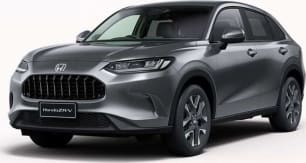Despite sitting in the medium-SUV segment, the CX-5 is on the compact side for cabin space and front passengers benefit the most in terms of leg- and headroom.
Back rowers get a decent amount of headroom but legroom is squishy and my legs press into the back of the drivers seat when its in my driving position, and I'm only 168cm tall!
My seven-year old complained about his space and asked Dad to slide forward for more room, which is something to consider if you have gangly teenagers.
The seat comfort sits on the firmer side for both rows and the electric front seats are narrower and shorter than I like for long journeys but for the A to B trips, they’re comfy enough.
Only the driver’s seat gets powered lumbar support but they both have heat and ventilation functions.
Individual storage is average for this class with a smallish glove box and middle console that has a removable shelf. A deep utility tray, which houses the wireless charging pad and a 12-volt port, sits in front of the gearshift and there are two cupholders in the centre console.
Each door has a shallow storage bin and the front doors also get a skinny drink bottle holder.
For individual storage in the rear, you get map pockets on the rear of the front seats and two cupholders in a fold-down armrest.
The armrest also houses two USB-A ports and the heat function buttons for the outboard seats and it's because of this positioning and the narrower width of the seat, that the back row feels more suited to two, rather than three passengers.
The technology on the whole is easy enough to use but the rotary dial operation of the multimedia system is a bit annoying to access while on the go.
The wireless Apple CarPlay and Android Auto is a great feature and means one less cable to worry about but the built-in satellite navigation with 10-year map updates is a highlight. The head-up display pulls through the nav directions, too, which is always handy.
You also get two USB-C ports and another 12-volt outlet up front, so everyone should be sorted for charging.
The boot features a powered tailgate which is a handy family feature and a temporary spare tyre is located underneath the level floor.
You get 438L of storage capacity with the second row seat upright, which is plenty for my errands and grocery shop. That jumps up to 1340L (VDA) when the rear seats are folded.
The cargo cover attaches to the lid, meaning it stays out of the way when you're loading stuff into the boot.






.png)
















































.png)
























 copy.png)
















